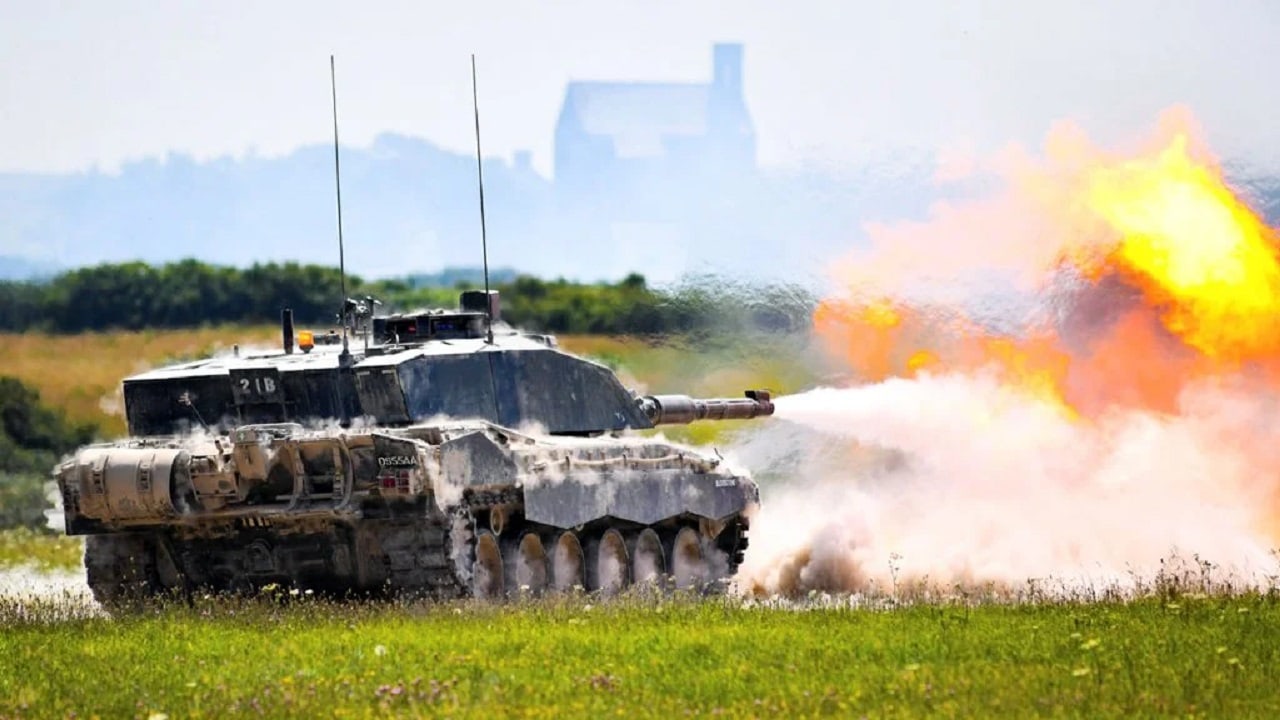New Ukraine Video Puts Into Question Effectiveness of Russian Defense
A video posted to social media by the Defense of Ukraine (@DefenceU) has gone viral.
The video is quite important as it puts into question the effectiveness of Russian defenses.
The footage shows a British Challenger 2 main battle tank easily pushing aside Russian concrete tank barriers, and rolling over a tank trench.
“Challenger 2: If there is such a thing as ‘dragon teeth’, there must be a ‘dragon dentist,'” the tweet noted mockingly.
It had been viewed nearly a half million times as of Friday afternoon.
Much has been made of the fortifications that the Kremlin has hastily constructed to blunt the expected Ukrainian counteroffensive.
These so-called “Putin Lines” look as if they’d fail to stop, let alone even slow down an advance by modern main battle tanks (MBTs), and it suggests that Russian leaders need to better understand how “dragon’s teeth” actually work.
The Origin of the Drachenzähne
Originally developed prior to the Second World War by the German military, these square-pyramidal anti-tank obstacles were produced using reinforced concrete. Each of these “teeth” was around three to four feet (90 to 120 cm) high. Though not technically intended to stop a tank, the idea was that it would slow down enemy vehicles, which could then be targeted with anti-tank weapons.
Though the British laid a significant number along its coasts as part of the defensive efforts to counter a German invasion, Dragon’s Teeth were most widely used as part of the Siegfried Line along the German border. What is also notable is that the Germans didn’t simply lay out the barriers on the ground, but rather each rested on a concrete map that was often sunk several feet into the ground to prevent tunneling, where an explosive could be more readily placed. The individual “teeth” could be further anchored to the mat, which meant that a tank couldn’t push it out of the way.
The dragon’s teeth were staggered and spaced in such a manner that a tank couldn’t drive through the rows of barrier, while the teeth were further reinforced with barbed wire and even pillboxes. The Russian Army clearly didn’t get the memo detailing the instructions on building and placing the defenses.
Proper Dragon’s Teeth Deployment
A more thorough placement of dragon’s teeth can now be seen along the border of Poland and the Russian exclave of Kaliningrad – but it was Warsaw’s forces not Moscow’s that constructed the defensive line. That effort began this past February and followed a border fence that was completed last October. Poland has further opted to fortify its border with Belarus.
Prior to the unprovoked invasion of Ukraine in February 2022, Kyiv had begun to construct fortifications as well, and though it didn’t widely employ dragon’s teeth, it did deploy a large number of “Czech hedgehogs,” the static anti-tank obstacles made of metal angle beams or I-beams.
Based on the recent video, as well as other photos shared on social media, the Russian efforts could likely do much to counter an attack. It is arguably just the latest wasted effort from the Kremlin in the ongoing war.
Challenger 2: If there is such a thing as “dragon teeth”, there must be a “dragon dentist.” pic.twitter.com/ieB13uVGTt
— Defense of Ukraine (@DefenceU) May 25, 2023
Author Experience and Expertise
A Senior Editor for 19FortyFive, Peter Suciu is a Michigan-based writer. He has contributed to more than four dozen magazines, newspapers, and websites with over 3,200 published pieces over a twenty-year career in journalism. He regularly writes about military hardware, firearms history, cybersecurity, politics, and international affairs. Peter is also a Contributing Writer for Forbes and Clearance Jobs. You can follow him on Twitter: @PeterSuciu.

